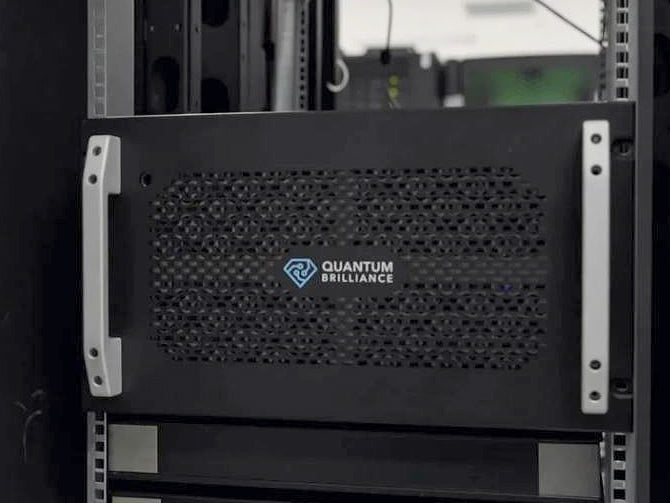The world’s first diamond-based quantum accelerator has been installed at the Pawsey Supercomputing Research Centre in Western Australia after more than a year of development by German-Australian deep tech startup Quantum Brilliance.
Quantum Brilliance’s quantum computer will be integrated with Pawsey’s Setonix supercomputer as the world’s first demonstration and test of a hybrid model of quantum and classical computing.

The announcement is a culmination of two years of partnership between the organisations.
The accelerator uses synthetic diamonds allowing it to function at room temperature in any environment. It sits on a 19-inch rack and can be fitted into supercomputer infrastructure in the same way as other blade computer servers.
Pawsey executive director Mark Stickells accompanied by Quantum Brilliance general manager for Europe, the Middle-East, and Africa, Mark Mattingley-Scott, announced the milestone from the floor of ISC 2022 on Tuesday.
The event is a four-day conference in Hamburg, Germany for high performance computing, machine learning, and data analytics.
Combined with Setonix, the $48 million HPE Cray Ex supercomputer, which is due to be fully operational later this year, the project will be used to investigate the operation of a quantum computer within a high performance computing (HPC) environment, the system connecting users, data, and software to supercomputer hardware.
In March 2021, Australian National University research spin-out Quantum Brilliance first announced it was committed to delivering a room temperature operable diamond quantum accelerator to the Pawsey facility.
At the time, Quantum Brilliance co-founder and chief scientific officer Dr Marcus Doherty said delivering this technology was a opportunity to cement Australia’s position as a leader in the global quantum industry.
“We have a once in a generation opportunity here to really have a national claim in what will be an incredibly important technology going for the next 50 years,” Dr Doherty said.
Mr Stickells said the installation presents a number of opportunities for quantum research and industry.
“The installation of Quantum Brilliance’s quantum accelerator is a critical step and prime example of aligning with Australia’s goals to accelerate quantum research and achieve real-world value. Completing the installation of the quantum system was a priority once Covid-related border closures were lifted,” Mr Stickells said.
“This will provide a testbed where real applications can be proved, so our researchers can do more effectively, enabling science and accelerating discovery. We look forward to seeing enterprises and researchers utilising HPC as a hub to explore novel classical-quantum codes using Setonix and the quantum accelerator as a step towards the hybrid computing future.”
Mr Mattingley-Scott said that installation of the quantum accelerator was an important step to making quantum computing more widely accessible.
“No infrastructure required, no cooling, no complex cryogenics, and relatively low power compared to other quantum computing technologies…the focus now, looking forward together with Pawsey, is now we’ve got this technology which can actually physically integrate into your own HPC system, it becomes key to understand, ‘how does that interaction work?’,” Mr Mattingley-Scott said.
“How do we start to look at variational algorithms, actually using the qubits to do something useful, because we’re convinced that the trajectory to quantum utility, where using a quantum accelerator actually becomes economically more effective than using a classic alternative is in the relatively near future not sometime in the distant future.”
The Pawsey Supercomputing Research Centre was set up in 2000 by CSIRO in collaboration with several universities.
In 2020, CSIRO developed a Quantum Roadmap in order to capitalise on what it estimated would be a $86 billion global industry by 2040. CSIRO estimated that Australia’s quantum industry alone could generate $4 billion and 16,000 new jobs by 2040.
Do you know more? Contact James Riley via Email.

